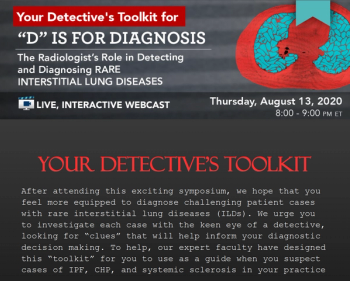
Exploring the Role of Radiologists in Diagnosis and Monitoring of VOD/SOS: An Illustrative Case Discussion
This online activity is designed to provide a concise and focused overview of the diagnosis and monitoring of veno-occlusive disease (VOD)/sinusoidal obstruction syndrome (SOS).
This online activity, "Exploring the Critical Role of Radiologists in Diagnosis and Monitoring of VOD/SOS: An Illustrative Case Discussion," is designed to provide a concise and focused overview of the diagnosis and monitoring of veno-occlusive disease (VOD)/sinusoidal obstruction syndrome (SOS). This activity provides insights on important topics such as updates on recent practice-changing guidelines and evidence in diagnosing and monitoring VOD/SOS through multidisciplinary care with a radiologist.
Upon successful completion of this activity, you should be better prepared to:
- Explain advances in the scientific understanding of VOD/SOS pathophysiology, clinical risk criteria, and the need for early imaging, monitoring, and intervention once identified in posttransplant settings.
- Determine the role of imaging techniques to optimize the diagnosis and monitoring of VOD/SOS among patients who have undergone hematopoietic stem cell transplantation (HSCT).
- Apply the most recent diagnostic and severity grading classifications to facilitate VOD/SOS diagnosis following HSCT.
- Identify strategies to improve multidisciplinary communication and coordination of care between radiologists and medical oncologists in the diagnosis and monitoring of patients with VOD/SOS cases.
View the PDF below, then
Newsletter
Stay at the forefront of radiology with the Diagnostic Imaging newsletter, delivering the latest news, clinical insights, and imaging advancements for today’s radiologists.
Related Content

























